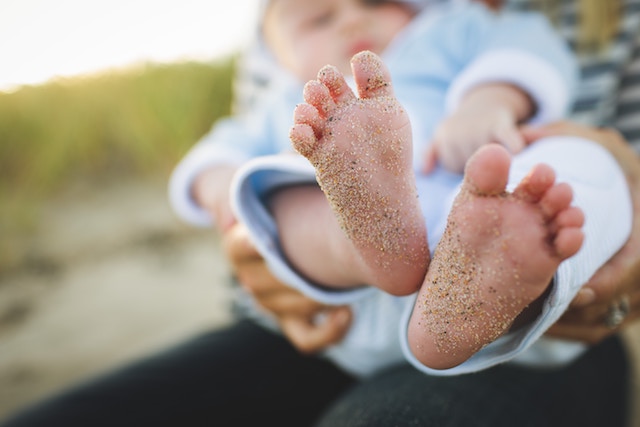For many first-time parents, researching the most eco-friendly and budget-friendly diapering options ends in confusion.
Too many choices.
Too much conflicting information.
Scientific studies are divided about the environmental impact of disposables versus cloth diapers.
But the stats can speak for themselves.
Disposable diapers:
- >> The average number of diapers used for one baby before using the potty (approximately 2.5 years) in the United States: 6,000
>> The total amount of waste from disposables per child: 2.5 tons
>> The time period for petroleum-based disposable diapers to decompose*: 200-500 years
>> The amount of disposable diapers used per day in the United States: 50 million (for comparison: Australia: 2.2 million, Japan: 6.7 million, U.K.: 9 million)
>> Percentage of all babies in North America using disposable diapers: 90 percent
>> The number of trees that go into diaper production each year in Northern America: 1 billion
* Once dirty diapers enter the landfill they become very toxic (only a small fraction of parents wash out disposable diapers before they throw them away) as the mixture of plastic, paper and feces start leaching contaminants and diseases. And since diapers absorb large quantities of water (that’s how they’re designed) their materials remain intact for many years.
Cloth diapers:
- >> The time period for used-up cloth diapers to disintegrate: six months
>> A home-washed cloth diaper has only 53 percent of the ecological footprint of disposables, and using a diaper laundry service lowers it to only 37 percent.
So what’s the catch?
A prime factor is convenience.
Parents can’t find enough hours in a day, and most working moms get only a short paid maternity leave (in the United States it is as little as six weeks; most European countries provide up to two years).
Very few daycare centers are equipped to handle re-usable diapers, so the only choice is disposables.
Saving time and energy is key for busy parents and caregivers. And although it seems logical to flush the poop in a toilet when using cloth diapers, most people using disposables do not practice this kind of cleanup—mainly for lack of awareness—which increases the ecological impact even more, as mentioned above.
Budget is another factor. Parents may view eco-friendly diapering as more expensive.
Due to an increased level of consciousness about our impact on the environment and increased interest in green and sustainable living, more and more parents are searching for alternatives to disposable diapers. New hybrid alternatives have arrived on the market in recent years, using biodegradable materials made from plant-based plastics known as bio-plastics. These new materials will decompose in 50-150 days, even in your home garden.
Why are cloth diapers better than disposables?
Cloth diapers are soft against baby’s skin, and since fabric is a breathable material they don’t cause rashes as often. They also don’t contain chemicals as disposables do.
Another advantage of cloth diapering is that children tend to potty train earlier (even by six months) than children using disposables: Since the cloth retains moisture, the child can feel discomfort of being wet or dirty unlike children with disposable diapers that are designed to wick away the moisture and avoid discomfort.
And what about hybrid diapers?
Hybrid diapers combine the best of both worlds: convenience of disposables and reusability of cloth diaper covers. Diaper covers or panties are fully washable and can be used either with biodegradable disposable inserts or washable cloth inserts.
So, is eco-friendly diapering really more expensive?
- >> Disposable diapers cost approximately $2,500 (U.S.) over a two and a half year period.
>> Cloth diapers: The initial cost between $50-150 for a supply that will last over the two and a half year period; plus added laundry costs of approx. $100-200 a year, totaling $300-750 over the 2.5 year period. Pant to hold the diaper costs anywhere from $2 to $20 per piece, and child will need at least two of each size (newborn, small, medium, large), so at least eight pieces total.
>> Biodegradable diapers cost approximately $2,300 over the two and a half year period.
>> Diaper laundering service costs approximately. $25 per week, totaling $3,200 and up depending on your local service providers (see more at Real Diaper Industry Association).
Green diapering options
The following companies are rated highly for their products
- >> Biodegradable diapers: Honest Company
>> Hybrid diapers: G-Diaper, Cotton Babies
>> Cloth Diapers: Bum Genius, Bummis, Fuzzi Bunz
Sources:
>> www.theenvironmentalblog.org
>> sustainer.org
>> extension.umn.edu
Katka Konecna-Rivera, born in communist Czechoslovakia, was inspired by the world beyond from an early childhood by her parents’ interest in arts, music and world cultures. Since her late teens she traveled the world, studied architecture and film in both Czech Republic and the United States. After over a decade of architecture work she refocused on film and video production. Two years ago she co-founded Living Green with Baby, a new online series of food, travel, home design and lifestyle programs designed to inspire parents to encourage healthy and environmentally sustainable habits at an early age. Katka still practices architecture focusing on sustainable design, and is involved in film and video productions. But Living Green with Baby is where she combines all of her skills and experiences with one sole purpose: helping our next generations live a healthier and greener lives. Katka currently divides her time between New York, Puerto Rico and Prague.
Like elephant green and elephant family on facebook.
Ed: Lynn Hasselberger











Read 10 comments and reply